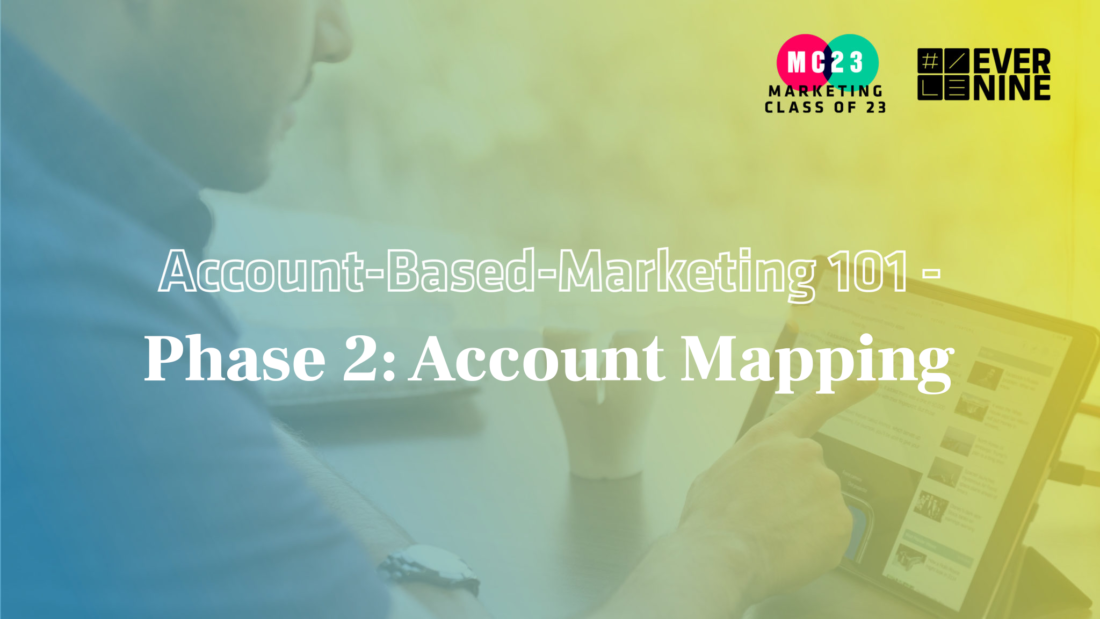
Account-Based-Marketing 101 – Phase 2: Account Mapping
From Sven Blaukat
In the first part of our series, we looked at the criteria used to create an account list. In the second part, we will now take a closer look at the companies with the aim of tailoring the content and messaging as closely as possible to the needs of the companies. This can be done, for example, by segmenting by decision-maker and influencer groups.
Precision in an account- or person-centric approach is a prerequisite for a successful ABM strategy/campaign.
The number of companies selected can already give an indication of which approach is chosen as a starting point for Account Based Marketing. If the number is below ten, it is possible to address the companies and their employees very individually (Strategic ABM). If the number is below about 100, it is obvious to work with vertical clusters or specific buyer groups (ABM Light). If there are more than 100 accounts, a programmatic approach is usually chosen – or a mixture of one-to-many and one-to-few strategies. Programmatic ABM is certainly the most commonly used entry tactic at the moment, which is why we at Evernine also call it the “ABM Demand Gen Approach”, as in this case relatively high MQL targets are often set.
The following clues help to divide the target lists into segments (simplified representation):
ABM Programmatic (from approx. 100 companies)
- Search for commonalities among the selected companies (e.g. similar business models)
- Grouping by industries/verticals
- Define group of decision makers (personas/job titles)
ABM Light (approx. 10-100 companies)
Here, the industry or function approach usually applies
- Does our product/service fit better to industries or do we solve problems of single job functions?
- Sorting of groups by industry or function/capability in the company (personas)
ABM Strategic (up to approx. 10 companies)
- Basic question: What exactly does the buying committee (buyer group) look like?
- With whom exactly have deals already been concluded in similar company constellations?
- How was the entry process carried out in the case of successful deals?
- Precise definition of job functions: Who are decision makers, who are influencers? (Personas)
- Which personal company contacts already exist? Where are contacts missing or where are the white spaces? (CRM/sales check)
- Naming of job functions per account and/or naming of decision makers (names)
Account Mapping
Persona profiles basically help to define the purchasing committees. Often, these have to be worked out anew together with the sales department. This sometimes somewhat “dry” preliminary work is important in order to deliver a painpoint-oriented message relatively precisely to the buyer groups or decision-makers and influencers. This increases attention, engagement and conversions.
After the target accounts have been divided into groups/personas/functions/contacts, the creation of the so-called “Play” follows – here it is decided with which solution or with which product one wants to approach the target accounts. “Play” and “Account Mapping” can be exchanged if necessary in the order of the ABM setup described here. Colleagues from product marketing and sales are consulted to define the “play”. Creativity is then also required here.
More on this in the third part of this ABM series.
If you’d like to learn more about account-based marketing or need help, just contact abm@evernine.de or find more information in our whitepaper.
Quelle Titelbild: Evernine Group



